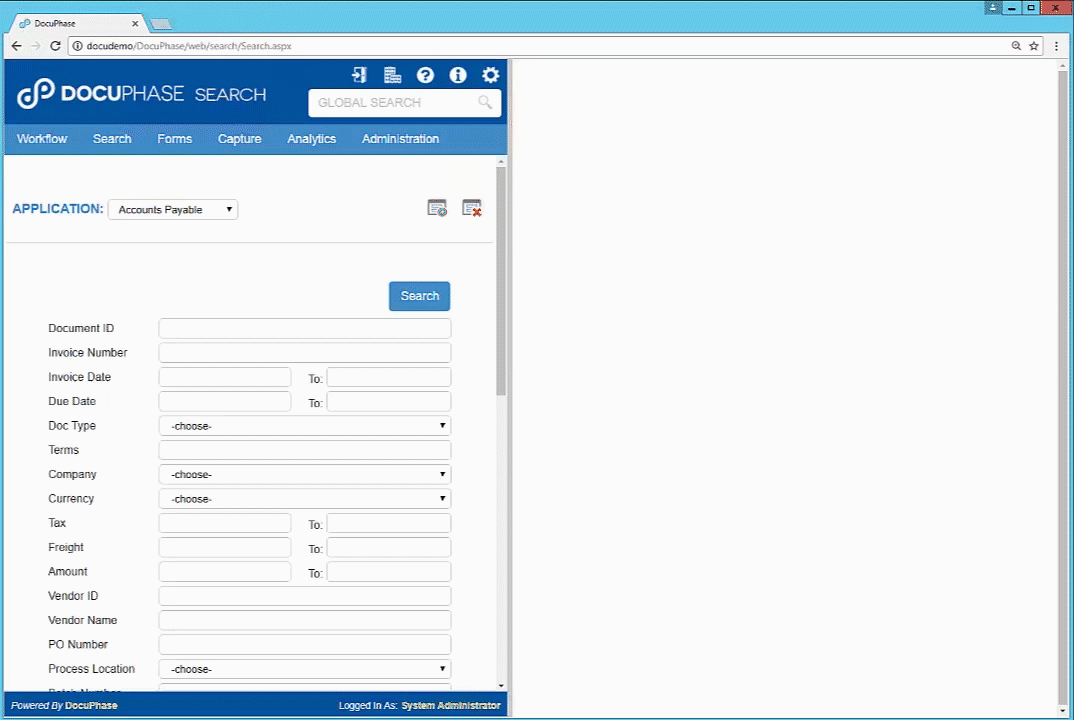10 Signs That Your Company Can't Support Growth
The goal of any business is to grow – to increase revenue and profits, all while keeping your customers and your employees happy. This is the...
5 min read
 Steve Allen
:
Jan 24, 2018 11:22:57 AM
Steve Allen
:
Jan 24, 2018 11:22:57 AM

Did you know that 71% of companies choose to end their tax year on December 31st, as opposed to ending their fiscal year on another date. If your company is part of the 71% of companies whose tax year ends on December 31, your corporate tax filing deadline is quick approaching. Tax time is at hand! That means that, in addition to dealing with your own personal income tax return at home, you’ve got to spend your time at work focused on filing a much more complicated tax return, Form 1120, which is generally due on March 31st for those with a December 31st tax year end.
The idea of organizing all of your tax-related data and documents can feel overwhelming, especially if you’re using outdated systems and maintaining hard copies of all of your records. These can really add up as time goes by, leaving you with cabinets upon cabinets full of documentation.
If you’re starting to feel buried under a growing mountain of stress and tax documentation, consider the types of problems that a Document Management System (DMS) can solve for you. With a DMS, you’ll be relieved from a lot of the things that make so many of us dread corporate tax filing season. Here are 10 things that a DMS can do for you during tax season:
According to a report by The Intersect Group, 60% of the cost of finance is attributed to labor such as manual data entry. Consider how long data entry takes for your business now, and how much it would be worth if your organization removed that step.
So, how can you remove this low-value activity and replace it with technology that will give your business a much higher ROI? With automated data entry solutions like Optical Character Recognition (OCR) software, your business can eliminate the need for human intervention, allowing more time for more valuable processes.
Furthermore, you can use OCR capabilities to automate your filing. The software can read the text in pre-designated zones on your most common documents, and it can file away your documents for you, while entering key data into your DMS, which can be synced with your other systems and databases.
When all of your tax documents are organized within an online document repository, it’s easy to recall the documents you need with a quick search.

You can even save your most common queries and perform them with a single click whenever you need to. No more lost documents. No more misfiling. No more re-creating or re-requesting documents you lost track of.
A helpful, but underutilized, feature within the DocuPhase DMS is tagging. All documents have indexes that are used to identify the document type, effective date, process status, and more. Apart from your normal document indexes, you can also use customized tags to group documents together.
How does this apply to corporate taxes? It’s simple. Any documents related to your 2017 corporate tax filings can be tagged “2017 taxes.” They can later be recalled by searching for that tag value, immediately pulling up every document you’ll need to reference as your corporate tax filing date approaches. Sound easy? That’s because it is!
The word audit has been known to strike terror in the hearts of accountants the world over, and for a good reason. Did you know that, according to a FERF study, the median audit feed paid by public companies in 2014 was $402,812?
It can be frightening to think about, but it doesn’t have to happen to you! If you’re using the DocuPhase document tagging system, you can pull up and export every document an auditor needs, saving yourself a ton of time and money! Operations don’t have to stop. You don’t need to recall boxes of files from off-site storage. Forget about the audit drudgery of the past. Document management software takes care of it for you.
We all know the feeling – it’s crunch time, and you’re stuck at the office all night, tirelessly working in order to meet your deadlines. It’s not fun, but somebody’s got to get it done.
Another good thing about a DMS is that, when your business processes and documents are cloud-based, employees are free to work from anywhere with an internet connection. This means reduced office costs, but it also means that you can go home, eat dinner, and spend some time with your cat. The work will still be there, but there’s no reason for you to be isolated at the office all night, powering through it, instead of in the comfort of your own home.
(While we’re on the subject of tedious work, check out our whitepaper, What Is Robotic Process Automation?, to find out how you can go beyond Document Management and begin automating tasks, routing, approvals, notifications, and more.)
When your documents are stored in the cloud and are accessible online, how can you determine who can view your documents? All businesses have sensitive documents that shouldn’t be available to just anyone.
The good news is that the best Document Management Systems will allow you to drill down your security settings, easily determining which groups within your organization can view each type of document. That way, when you add new people, you can add them to the appropriate groups, and they will immediately have access to the appropriate documents, and won’t have access to anything they shouldn’t be seeing.
How likely is it that your business will experience a natural disaster, and if you do, how likely are you to recover? According to NFIB, 30% of small businesses will experience a natural disaster at some point. What comes next is even more frightening: Of the businesses that experience major data loss, 70% of them are out of business within a year! It’s a frightening possibility that all of your data and documents could be lost!
Luckily, a DMS can help you address these concerns. With Document Management software, you can ensure that, in the event of an emergency, you’ll be covered. This is done through:
To learn more about how a DMS can protect your important tax-related documents from the threat of a natural disaster, check out our blog post, “Disaster Recovery: How a Document Management System Can Help Your Business Survive a Natural Disaster.”
How long are you required to hold onto your records? The IRS suggests you keep your supporting tax records for 7 years. A good DMS will allow you to set up rules for how long documents will be kept and when they will be deleted from the document repository, helping you stay in line with retention and compliance requirements, no matter what industry you’re in.
DocuPhase’s iRetention Manager provides you with document lifecycle management and allows the definition of retention periods to be set by document type and other conditions. Documents are deleted based on defined retention periods and conditions. And just that easily – your document retention policy is set up, and you’re good to go!
When you’re working with numbers, you know how important accuracy is. If you’re starting off with bad data, your numbers are bound to be wrong in the end. That’s why it’s important for all of your databases to be accurate and in sync with each other.
Consider what software your organization currently uses – not just in finance, but across the entire company. Do you use Microsoft GP? Salesforce? NetSuite? Outlook? Whatever you’re using throughout your organization, look for a DMS that can integrate with it. That way, information can be passed back and forth between your DMS and your other software systems.
This will prevent you from having to enter the same data more than once, and it will ensure that your data is synced and up to date, across all of your databases.
While a single sheet of paper costs almost nothing to produce, the cost of ink and paper adds up over time. Did you know that 50% of business waste is made up of paper? US offices use 12.1 trillion sheets of paper per year. What’s more, paper documents are frequently misplaced. Employees spend an average of 30-40% of their time looking for information they can’t easily find. Even worse, when documents can’t be found and need to be replaced, your business stands to lose anywhere from $350-$700 per document.
When you look at the actual numbers and how they add up over time, the cost of paper and printing feels more significant, and the benefits of a DMS become more tangible.
As you head into corporate tax season, consider how these 10 attributes of Document Management software can make your finances easier to manage now and in the future. For more details about how going paperless can work for you, check out our free ebook, Not Your Mama’s Guide to Going Paperless!

The goal of any business is to grow – to increase revenue and profits, all while keeping your customers and your employees happy. This is the...

Would you believe it if someone told you that 59% of business processes will be automated within the next five years, and that 83% of IT decision...

How can you maintain and grow your lending customer base? In theory, it’s pretty simple: